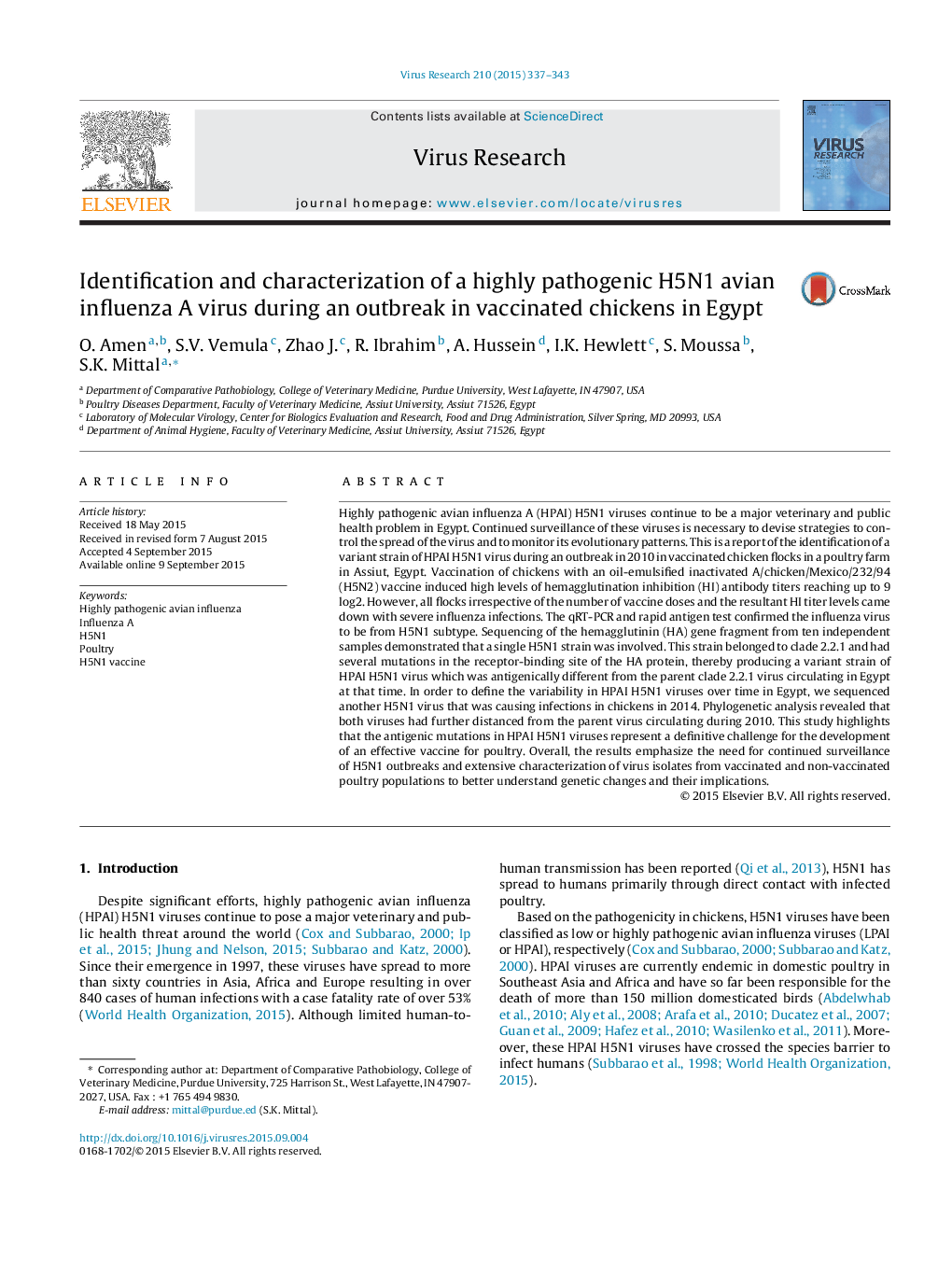| Article ID | Journal | Published Year | Pages | File Type |
|---|---|---|---|---|
| 3428077 | Virus Research | 2015 | 7 Pages |
•Identification of a variant stain of HPAI H5N1 virus in vaccinated chicken flocks in Assiut, Egypt.•Mutations of receptor-binding site of HA protein produces a variant HPAI H5N1 virus.•Antigenic mutations in HPAI H5N1 viruses pose challenge for effective vaccine for poultry.•Continued surveillance is necessary to control spread of virus and monitor evolutionary patterns.•Vaccines must cross-protect between antigen and circulating influenza viruses.
Highly pathogenic avian influenza A (HPAI) H5N1 viruses continue to be a major veterinary and public health problem in Egypt. Continued surveillance of these viruses is necessary to devise strategies to control the spread of the virus and to monitor its evolutionary patterns. This is a report of the identification of a variant strain of HPAI H5N1 virus during an outbreak in 2010 in vaccinated chicken flocks in a poultry farm in Assiut, Egypt. Vaccination of chickens with an oil-emulsified inactivated A/chicken/Mexico/232/94 (H5N2) vaccine induced high levels of hemagglutination inhibition (HI) antibody titers reaching up to 9 log2. However, all flocks irrespective of the number of vaccine doses and the resultant HI titer levels came down with severe influenza infections. The qRT-PCR and rapid antigen test confirmed the influenza virus to be from H5N1 subtype. Sequencing of the hemagglutinin (HA) gene fragment from ten independent samples demonstrated that a single H5N1 strain was involved. This strain belonged to clade 2.2.1 and had several mutations in the receptor-binding site of the HA protein, thereby producing a variant strain of HPAI H5N1 virus which was antigenically different from the parent clade 2.2.1 virus circulating in Egypt at that time. In order to define the variability in HPAI H5N1 viruses over time in Egypt, we sequenced another H5N1 virus that was causing infections in chickens in 2014. Phylogenetic analysis revealed that both viruses had further distanced from the parent virus circulating during 2010. This study highlights that the antigenic mutations in HPAI H5N1 viruses represent a definitive challenge for the development of an effective vaccine for poultry. Overall, the results emphasize the need for continued surveillance of H5N1 outbreaks and extensive characterization of virus isolates from vaccinated and non-vaccinated poultry populations to better understand genetic changes and their implications.
